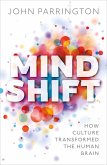The human brain is made up of 85 billion neurons, which are connected by over 100 trillion synapses.
For more than a century, a diverse array of researchers searched for a language that could be used to capture the essence of what these neurons do and how they communicate - and how those communications create thoughts, perceptions and actions. The language they were looking for was mathematics, and we would not be able to understand the brain as we do today without it.
In Models of the Mind, author and computational neuroscientist Grace Lindsay explains how mathematical models have allowed scientists to understand and describe many of the brain's processes, including decision-making, sensory processing, quantifying memory, and more. She introduces readers to the most important concepts in modern neuroscience, and highlights the tensions that arise when the abstract world of mathematical modelling collides with the messy details of biology.
Each chapter of Models of the Mind focuses on mathematical tools that have been applied in a particular area of neuroscience, progressing from the simplest building block of the brain - the individual neuron - through to circuits of interacting neurons, whole brain areas and even the behaviours that brains command.
Lindsay examines the history of the field, starting with experiments done on frog legs in the late eighteenth century and building to the large models of artificial neural networks that form the basis of modern artificial intelligence. Throughout, she reveals the value of using the elegant language of mathematics to describe the machinery of neuroscience.
For more than a century, a diverse array of researchers searched for a language that could be used to capture the essence of what these neurons do and how they communicate - and how those communications create thoughts, perceptions and actions. The language they were looking for was mathematics, and we would not be able to understand the brain as we do today without it.
In Models of the Mind, author and computational neuroscientist Grace Lindsay explains how mathematical models have allowed scientists to understand and describe many of the brain's processes, including decision-making, sensory processing, quantifying memory, and more. She introduces readers to the most important concepts in modern neuroscience, and highlights the tensions that arise when the abstract world of mathematical modelling collides with the messy details of biology.
Each chapter of Models of the Mind focuses on mathematical tools that have been applied in a particular area of neuroscience, progressing from the simplest building block of the brain - the individual neuron - through to circuits of interacting neurons, whole brain areas and even the behaviours that brains command.
Lindsay examines the history of the field, starting with experiments done on frog legs in the late eighteenth century and building to the large models of artificial neural networks that form the basis of modern artificial intelligence. Throughout, she reveals the value of using the elegant language of mathematics to describe the machinery of neuroscience.









